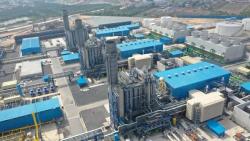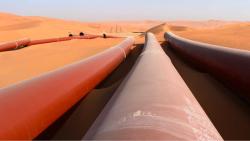
OR WAIT null SECS
© 2024 MJH Life Sciences™ and Turbomachinery Magazine. All rights reserved.
Online washing of gas turbines
The basic objectives of on-line cleaning are to maintain the cleanliness of a gas turbine compressor after off-line washing, to maintain power and efficiency by minimizing ongoing losses, and to extend the operating period between shut-downs required for offline (crank) washing. On-line washing for fouling control has become increasingly important with base load combined cycle plants and CHP plants. It is also important for gas turbines in mechanical drive service, where little or no redundancy is installed and where the downtime associated with crank washing must be minimized.
This article contains excerpts from the paper, "Gas turbine performance and maintenance" presented at the 2013 Turbomachinery Symposium by Rainer Kurz of Solar Turbines Incorporated, Cyrus Meher-Homji of Bechtel Corporation, Klaus Brun and Jeff Moore of Southwest Research Institute and Francisco Gonzalez of Enterprise Products.
On-line wet cleaning is performed while the gas turbine is in operation and at load. The procedure involves the injection of a mixture of water and chemical detergent via atomizing spray nozzles positioned around the compressor air intake plenum. This is followed by a flushing period using pure water. With on-line cleaning it is mandatory to use demineralized water for preparing the cleaning fluid and for flushing. This is because the turbine is in operation, and high temperature corrosion damage may occur if sodium or other contaminant metals enter the combustion path.
The water specification of the particular OEM should be followed, but typical values are presented below:
• Total Solids (dissolved and undissolved) ≤ 5 ppm
• Total alkali and other metals which may promote • Hot corrosion (Na, K, Pb, V) ≤ 0. 5 ppm
• pH 6. 5-7. 5 An on-line washing program should always be started on a clean engine, after an overhaul or crank wash. It is not recommended to perform on-line washing on a heavily fouled engine because large quantities of dirt removed from the front stages would instantaneously pass through the compressor. Therefore, after starting an on-line wash program, the time intervals between subsequent washings should be kept short; approximately every three days to weekly, depending on the local conditions.
Also, depending on the type of deposits (i. e., portion of water-insoluble compounds), detergent cleaners may be used for every on-line wash, or for every second or third on-line wash, but not less frequently than once per week. Note that the longer detergent washing is not done, the greater the risk of downstream contamination due to large portions of insoluble compounds suddenly being removed when the next detergent wash is performed. Thus, frequent on-line washing using detergents is advisable to minimize the accumulation of insoluble foulants.
The duration of each on-line wash can also be varied according to the degree of fouling, engine size, and plant experiences, etc. Typical on-line cleaning cycles are in the order of 10-20 minutes, and a flushing or rinsing cycle (using only demineralized water) of about the same duration should be applied after each cleaning cycle with detergent; for example, 10-20 minute cleaning cycle with detergent, followed by 10-20 minute flushing cycle without detergent.
This type of regular on-line wash regime will extend the operating period between outages required for offline cleaning, which is particularly important for base load plants. The design of an on-line washing system should attempt to obtain the highest possible cleaning efficiency with the lowest injection mass flow rate, and this can be achieved in combination with an optimum washing regime as discussed above. Frequent on-line washing (to keep a clean compressor clean) enables the use of low injection mass flow rates, and this can only be considered as “good” for the gas turbine.
To summarize: • Frequent on-line cleaning with a low injection mass flow system minimizes the risk of deposits being suddenly washed from the front stages onto downstream compressor stages. This also addresses concerns that removed dirt may enter airfoil film cooling systems of turbine blades.
• Low injection mass flow reduces blade loading, and creates less stress on downstream blading.
• If the gas turbine uses flame detectors, high water mass flow may interfere with flame detector intensities, and may also create a trip by causing fogging of flame detector lenses, etc.
• Higher CO emission levels may be observed during on-line washing, which becomes more significant with higher water injection rates. • Typically, high mass flow nozzles create larger sized droplets. This means they are more influenced by gravity, and have a greater tendency to fall and be deflected onto inlet plenum surfaces. This also increases the risk of blade erosion.
• Effective on-line cleaning requires that the IGVs are thoroughly wetted with appropriately sized water droplets (typically 50-250 microns range). Any excess water is likely to “stream” over inlet plenum surfaces and struts, etc., and serves little or no purpose in the washing process. As mentioned above, excess water impacting the root area of IGVs may also initiate erosion of the rotating blades.
• Lower injection mass flow rates reduce demineralized water and cleaner consumption, and also reduce the size, volume and cost of the wash skids.
• Experience has shown that a low water wash mass flow does not impair on-line cleaning efficiency.


